#there was supposed to be even more perspective shifts to like. the actual battle nexus
Photo
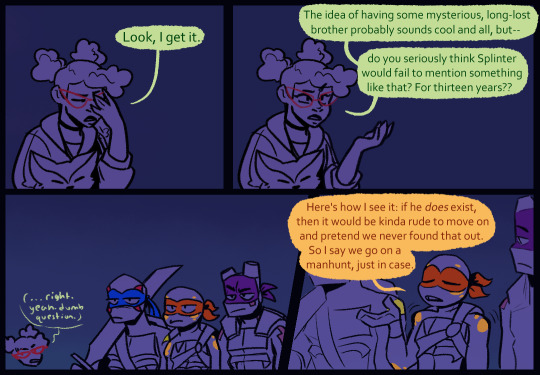



Bonus Page 2/2
BEGINNING | PREVIOUS
Mikey’s intuition knows no bounds
And with that I bring part one of Mutant Manhunt to a close! There’ll be more coming, trust me, but probably not a multi-part comic like this one for a while (just to give myself a break, lol). In the meantime I’ve got plenty to share about this AU, so feel free to stick around :]
#bro i was so excited to do background rendering#and then i actually did it#and i hated every second of it#there was supposed to be even more perspective shifts to like. the actual battle nexus#but i decided i liked myself too much to go through such torture#so yeah live and learn ig#mutant manhunt au#rottmnt#rottmnt mikey#rottmnt april#rottmnt leo#rottmnt donnie#rottmnt mayhem#my art
2K notes
·
View notes
Text
Day 140 - Isle of Skye (For One)

Today we enjoyed our last Rabbie's tour of the trip--a 12-hour excursion to the Isle of Skye and back. After an early breakfast of coffee and cereal, we headed down to the meeting point in town. Jessica still wasn't feeling well, but she was determined to make it.
Sadly, she didn't make it far.
As we rode along the gently winding freeway along the side of Loch Ness, it soon became clear that things weren’t going to go very well. In addition to its other lovely gifts, Jessica's cold seemed to have lowered her threshold for car sickness to a dangerous level.

After making the bus pull over for fresh air half-way down to Urquhart Castle–then barely making it to the castle from there–we both knew that it was a losing battle. There were still eleven and a half hours to go, and it was only going to get rougher from there on in. So, as much as we hated to do so, we asked our guide Emily to arrange a taxi to take Jessica home. Having been assured by Jessica that she would be fine, I stayed on the bus with the promise to take all the pictures I could.
12 hours and 1,306 pictures later, I think I kept my promise.
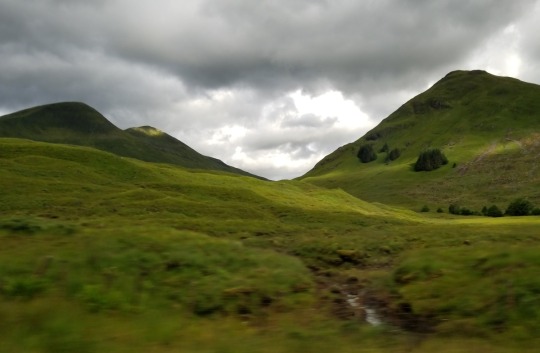
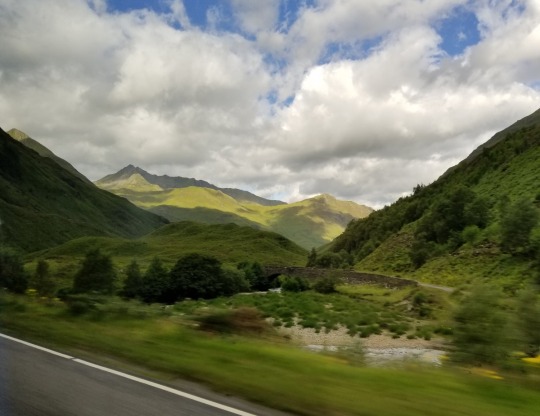
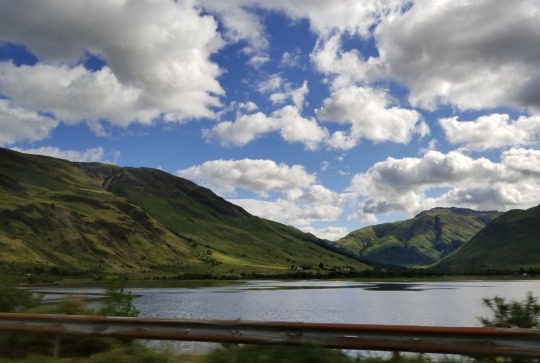
While Jessica waited for her very expensive taxi to drive all the way out from Inverness and take her back into town on a Sunday morning, I rode on through an increasingly twisting and ruggedly beautiful stretch of the Highlands. And after an hour or so, we stopped at Eilean Donan Castle.
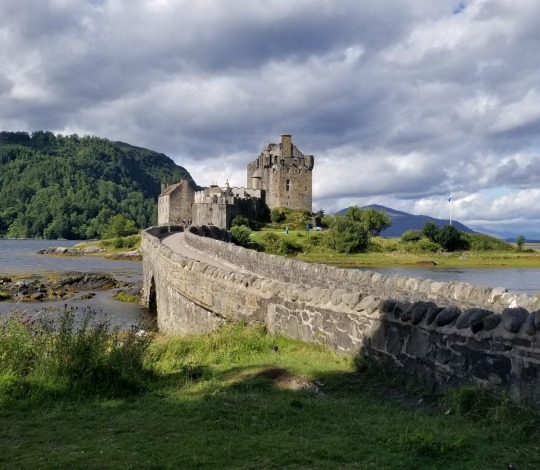

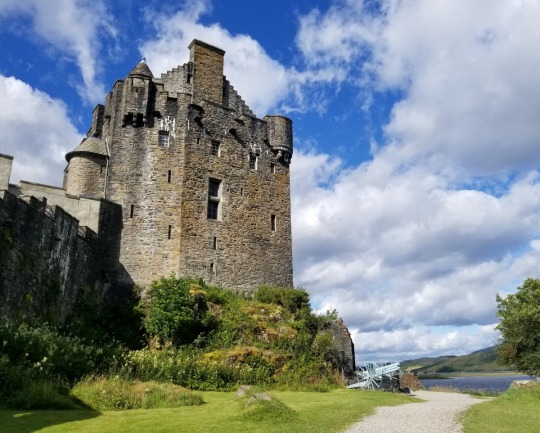
Sitting at the nexus of three lochs near the western coast of Scotland, Eilean Donan is one of the most stunningly picturesque castles I saw during the entire trip. And the views from the castle were just as amazing as the views of the castle.
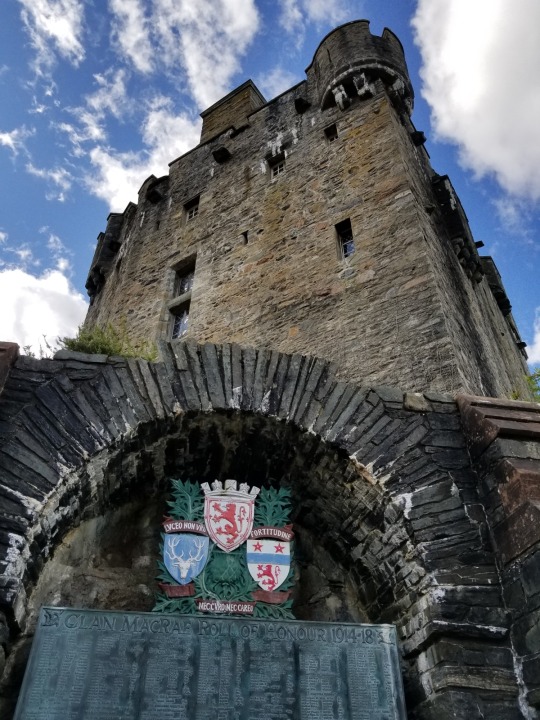
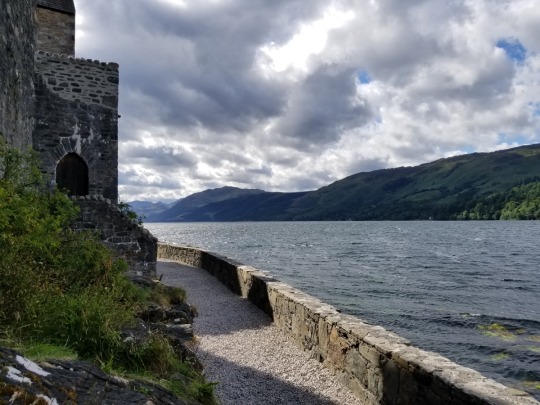

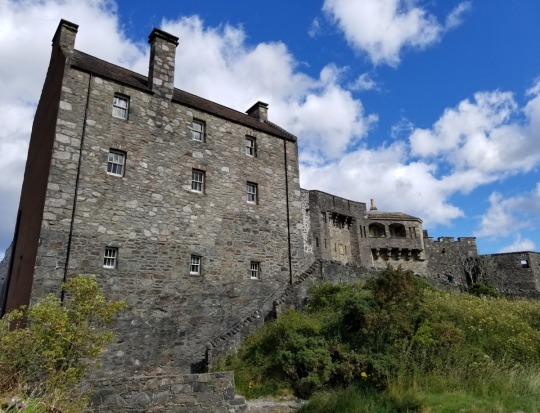
As I learned inside the castle, however, the building that stands today is a modern recreation. The original castle was blown up by the British in 1719 during the Jacobite uprisings. 200 years later, a descendant of the Jacobite owners reclaimed the ruins and poured his fortune into rebuilding it as it was.

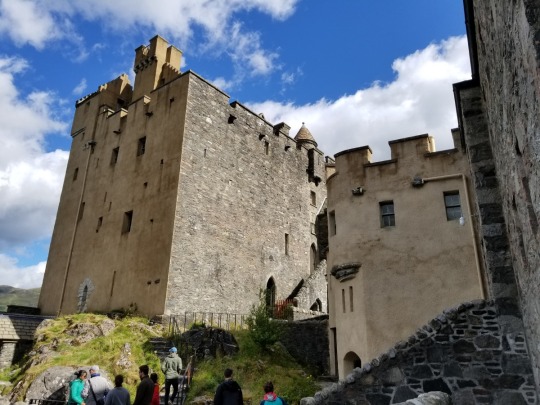
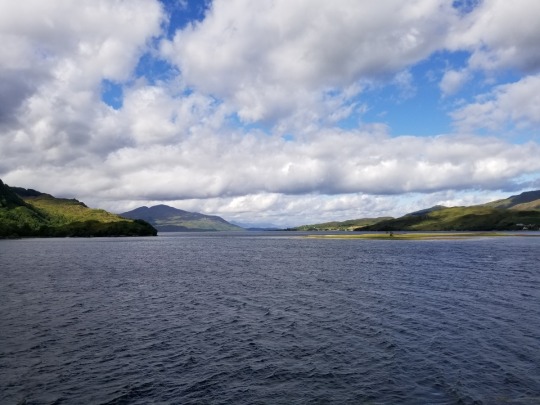
The results are stunning and well worth a visit. But mostly just for the views.
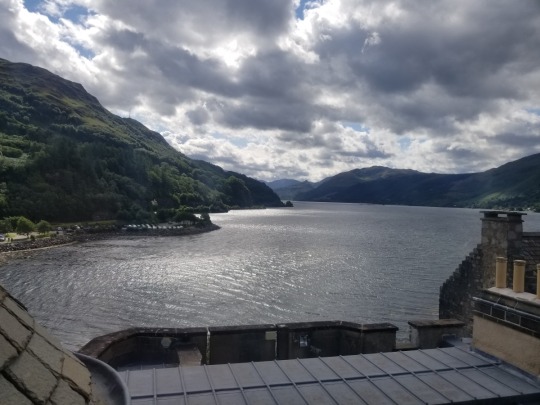
After spending most of our allotted hour taking pictures outside the castle, I decided I should make the most of my 10-pound ticket and actually go inside. In retrospect, that might have been a mistake. The interior of the castle is a cramped shrine to the owner's family history. There's a display case dedicated to the Bonnie Prince, including a lock of his hair and a letter penned in his hand.
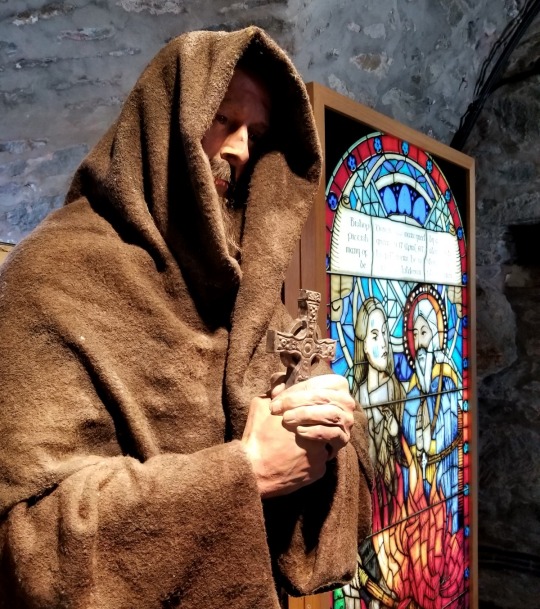
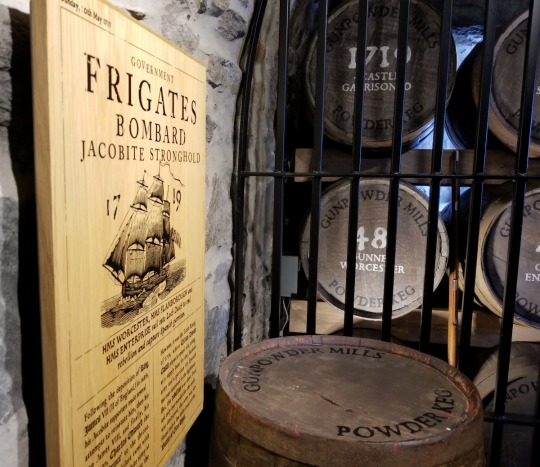
It was so crowded inside that we had to use the stairs in shifts. Once I got upstairs, there was a ten-minute wait before I was allowed to go back down.
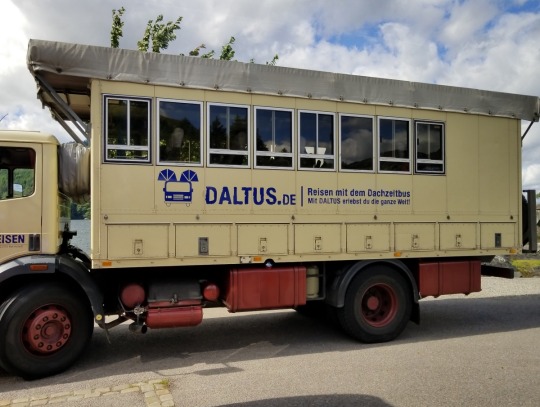
As we were leaving, we saw a crazy German camping tour truck in the parking lot.
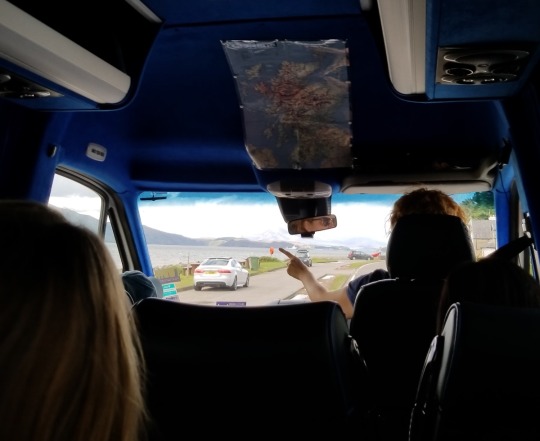
As we drove onward, Emily dispelled some common myths about Highland culture. The first was the idea of clan tartans. In Edinburgh, we saw shops filled with tartan patterns associated with one clan or another. It's a popular souvenir for Americans with Scottish heritage to come and buy a scarf or cap printed with their supposed family pattern. But this is another artifact of Victorian romanticism.
When Queen Victoria was touring the Highlands, she noticed that when she stayed with a family, their family portraits would all feature similar tartan patterns. Coming from a perspective of English royalty, she assumed that the patterns were the Highland equivalent of family colors or coats of arms. In reality, they were just the patterns and colors that the local seamstresses were familiar with. If anything, tartan patterns were simply indicators of who made the fabric, not of who wore it.
Emily also talked about the Scottish clan system and how American tourists tend to misunderstand the significance of clan names. Clans were political units, not family units, and clan names were not family names. Some clans were named after their chiefs, but many were named for legendary or historical warriors with no actual relation to the clan.
Having the last name MacDonald doesn’t necessarily mean you are descended from the MacDonald clan. It probably just means that you are descended from some guy whose father’s name was Donald. And even if you can trace your genealogy back to the Clan MacDonald, which one? There were tons of rival clans that went by the same name.
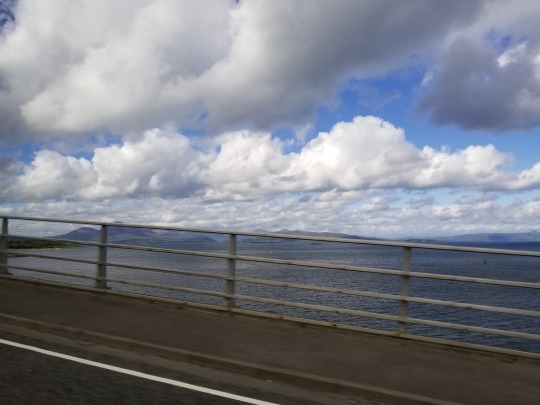

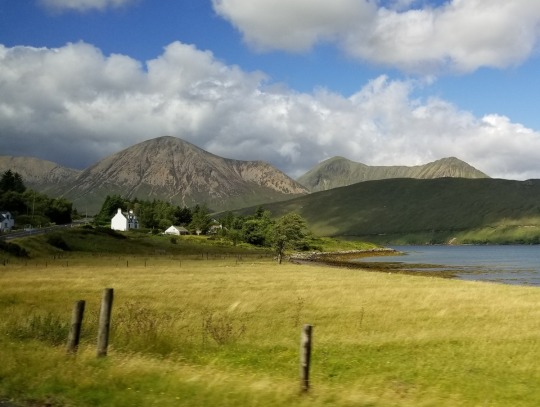
Finally, we crossed the bridge onto the Isle of Skye. The bridge is fairly new. Before it opened in 1995, people had to take a ferry from the mainland. According to Emily, the bridge was a controversial project. Being able to drive on and off the island at will was a boon to the economy, and tourism on the island has exploded. But at the same time, Skye has lost some of the mystique and cultural insulation that it had previously enjoyed.


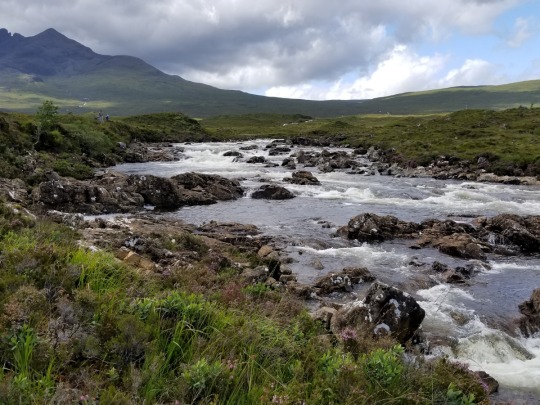
Our first stop was at the Cuillin Mountains, which dominate the southern end of Skye. The range is divided into the Red Cuillins and the Black Cuillins. The Red Cuillins are rounded and grassy–perfect for grazing. The Black Cuillins are steep and craggy–perfect for climbing. Legend says that they were formed when two giants fought for days on end to determine which was stronger.
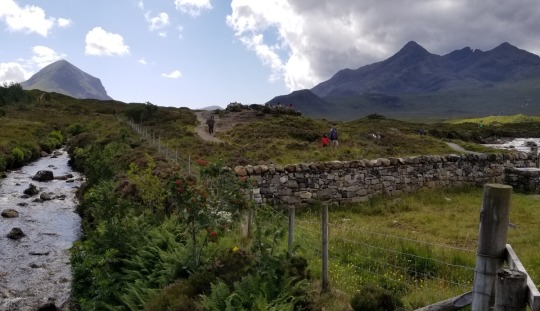
It looked like the Shire and Mount Doom had been smooshed together into a single frame.

Our next stop was Portree, the largest village on Skye. The name is a corruption of Port Righ, a Gaelic name meaning King's Port. According to legend, it was named after King James V visited the island in 1540. The two main clans of Skye--the MacDonalds and the MacLeods--were in the grip of brutal feud. The savagery got so out of hand that it was becoming a national embarrassment, reinforcing the negative stereotype of the savage Scots throughout Europe.

Determined to reestablish order in the outskirts of his realm, James sailed over Skye to tell the clan leaders in person to knock it off. He chose to land his fleet at a neutral fishing village in the middle of the island, and that village was thereafter known as the King's Port.
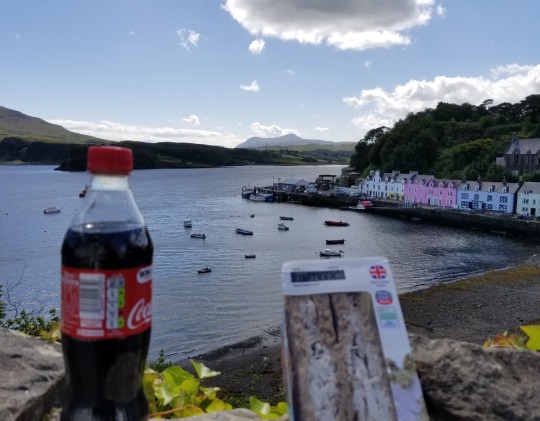
Trying to save a bit of time and money, I picked up a sandwich from a nearby Co-Op. I wandered up the hill to find a place to sit with a view, but there was no seating to be found. I eventually turned back and wandered down to the pier, where I finally found a bench perched precariously close to the edge.
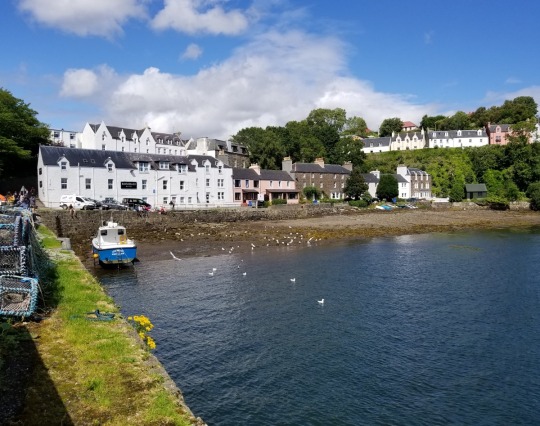
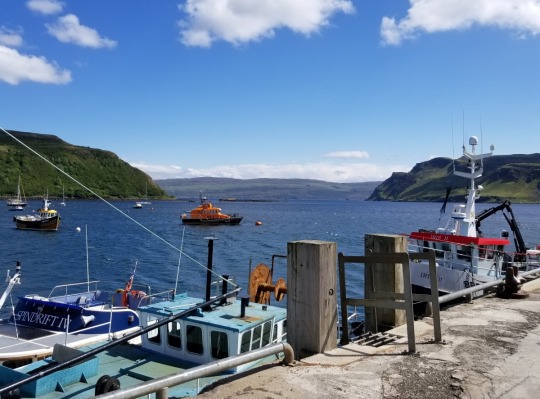
After lunch, I headed up another hill to see the so-called Apothecary's Tower. Emily had recommended it to us for having great views and being virtually deserted no matter how many tourist buses were in town.
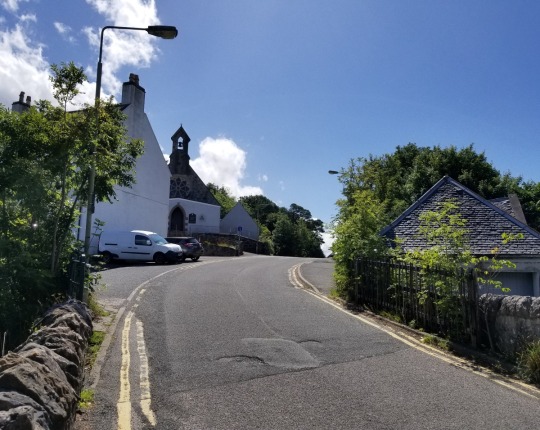
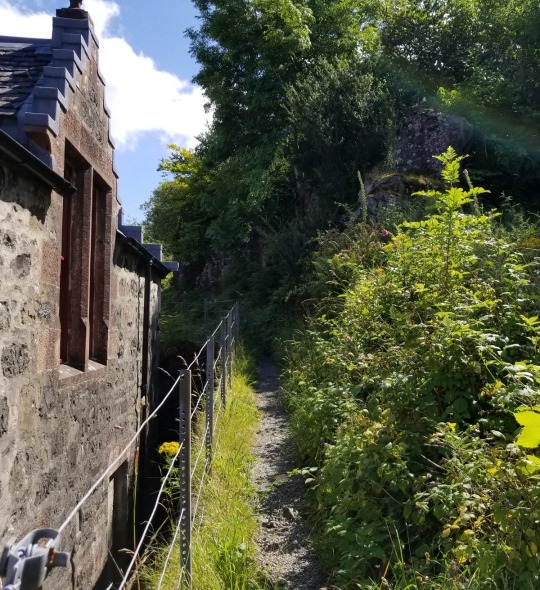
On my way up, I got sidetracked and ended up following a long trail around the side of the hill. The views were spectacular, though, so I didn’t bother to turn around.
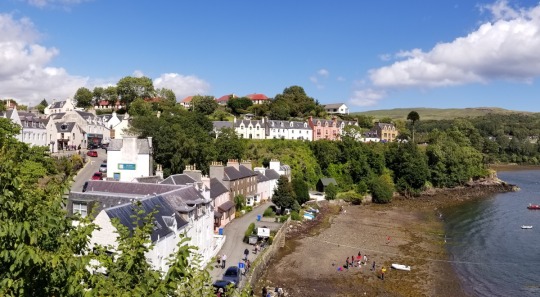

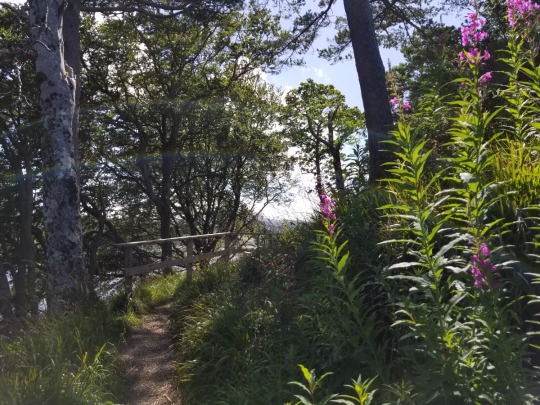

And I did make it to the tower in the end.
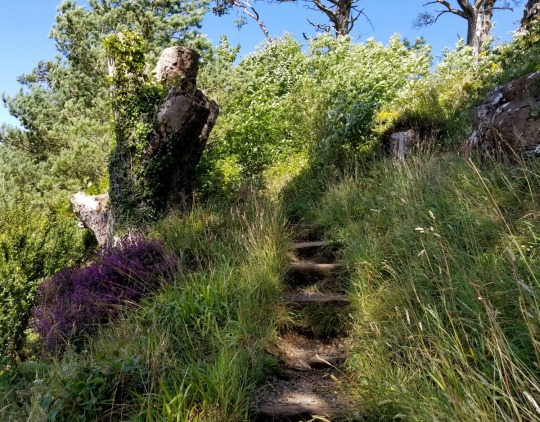
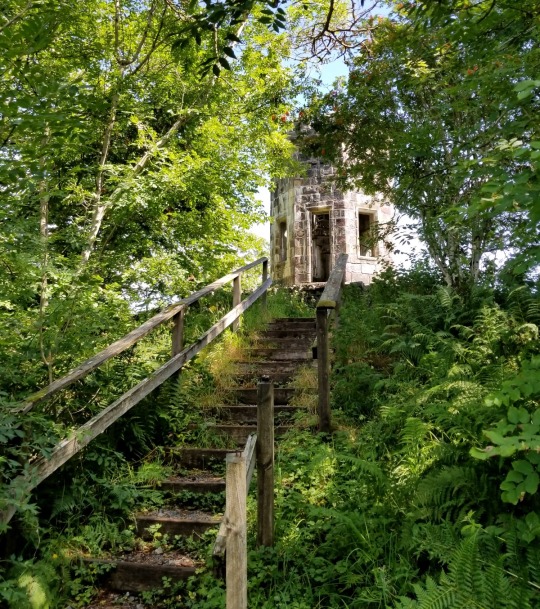
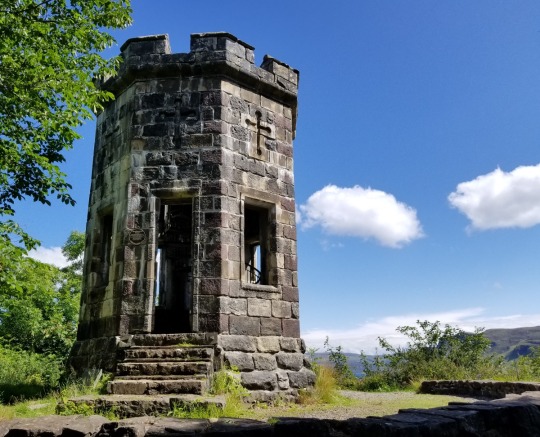
Just like Emily said, the place was deserted and offered a great view of the city. It was built in the 1800s and served briefly as a medical dispensary for local sailors, hence the name Apothecary's Tower.
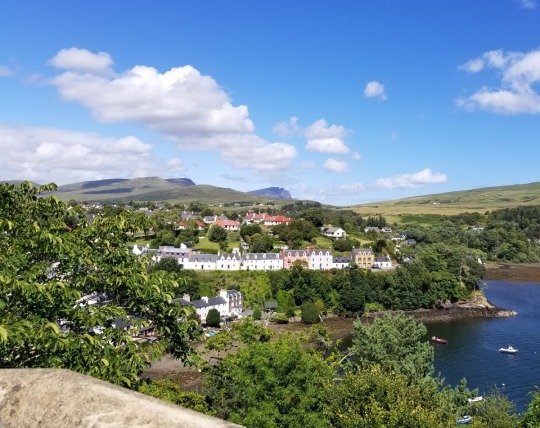
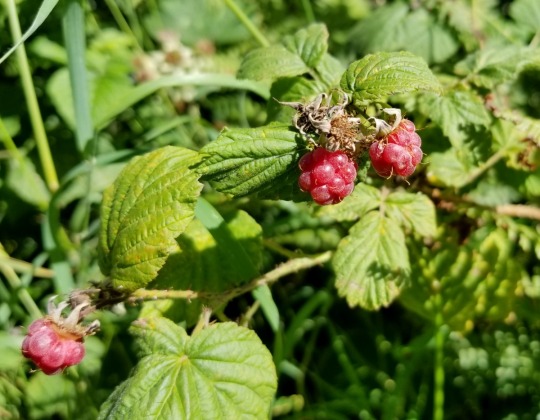
I also spotted a wild raspberry bush.
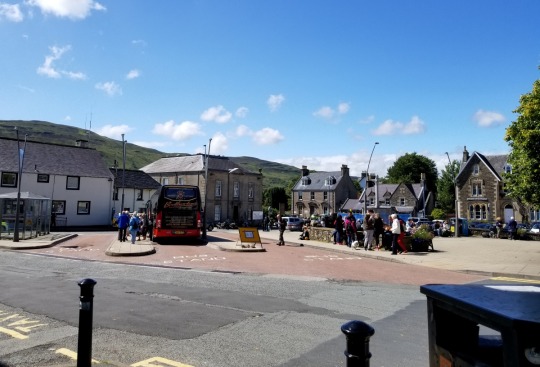
Back in town, I had just enough time to peek into a few craft shops and pick up a souvenir for Jessica--a tiny handmade glass puffin.

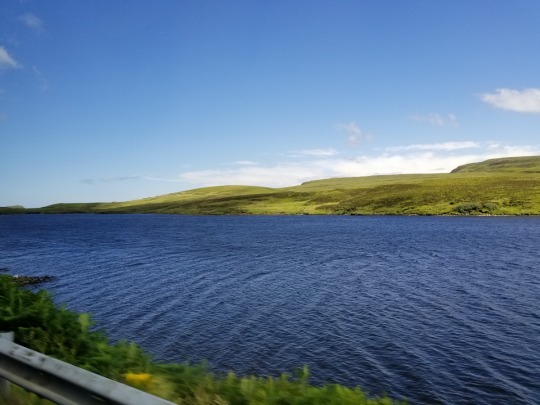
Back in the bus, we continued northward along some amazingly blue water toward the Storr, a jagged hill with spiky stone formations sticking out at otherworldly angles. One spike in particular stands out, on its own about halfway down the slope. It's known as the Old Man of Storr, and from a distance, it looks like the silhouette of a stooped man walking down a gentle slope.
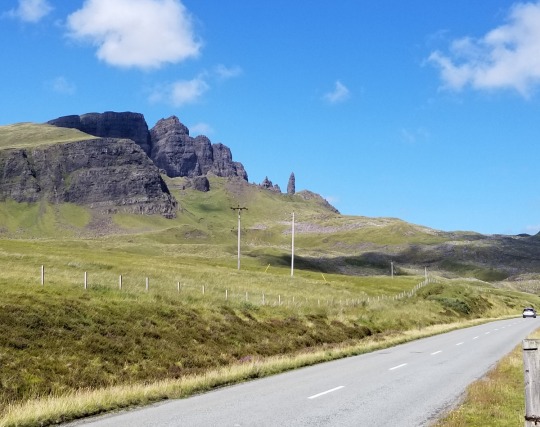
One legend says that long ago, an amorous young couple was wandering the hillsides north of Portree. Among the crags and crannies of the Storr, they stumbled across a gathering of fairies. Fairies do not like being disturbed, and the couple ran away as fast as they could. The woman made it to safety, but the man was caught by fairy magic and turned to stone--cursed to spend the rest of time as a morality tale against sneaking off at night.

Emily praised the remarkably clear day, and as we pressed further north we could see the distant isles of Raasay and Rona and the Scottish mainland beyond.
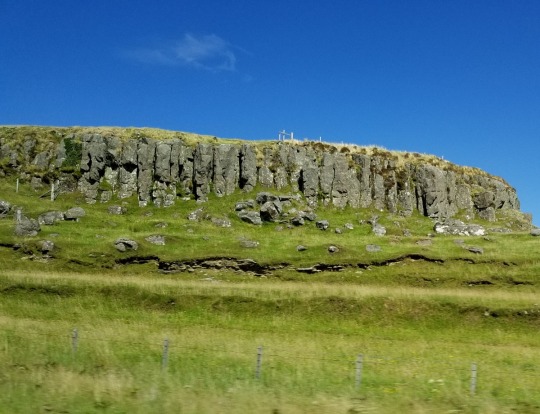

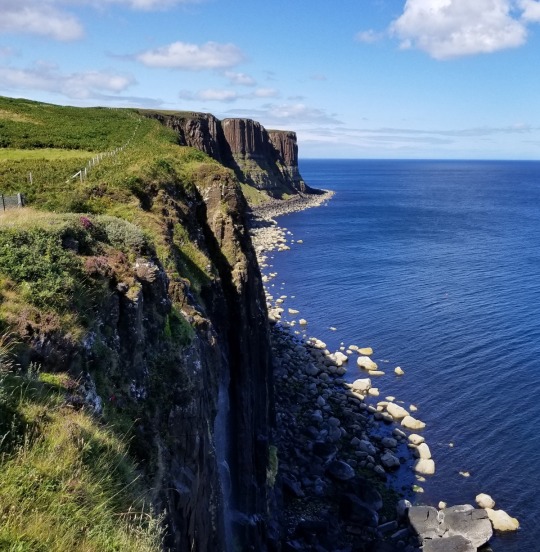
Our next stop was Kilt Rock, a long coastal cliff made of columnar basalt that resembles the pleats of a kilt. The views are spectacular, and there is ample parking for the hordes of tourists competing to see them.
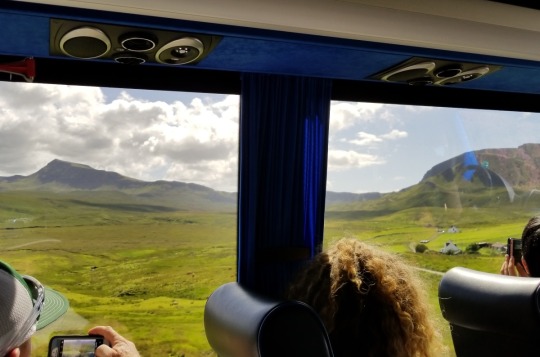
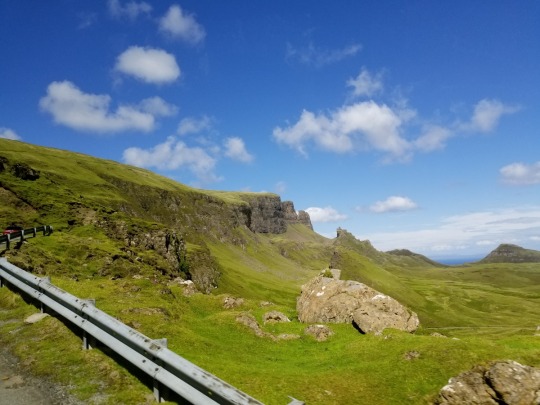
Our last big stop of the day was a mountainous region of northern Skye called the Quiraing. It goes on for miles, but there's one view in particular that seems purpose-built to make a spectacular photo.
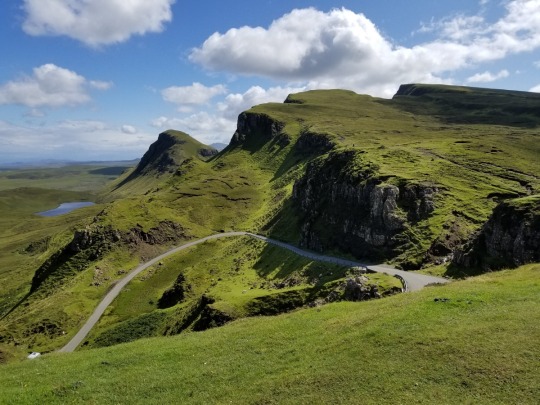

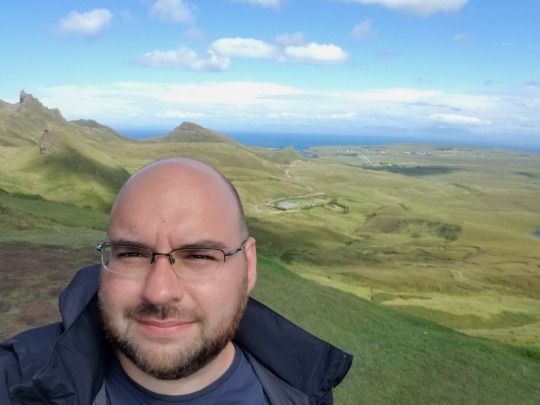
We had about twenty minutes to wander around, and I must admit that this was a stop where I was one of those annoying people who lose track of time and hold everyone up an extra few minutes. I'd do it again in a heartbeat.
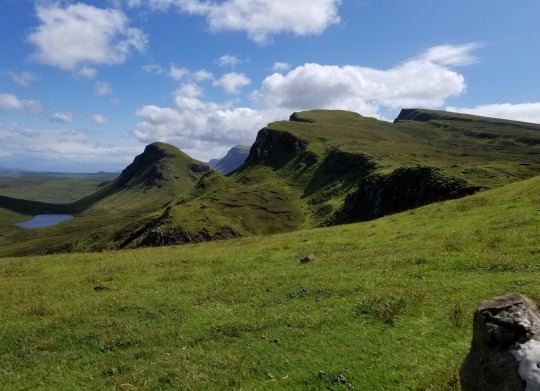
Skye is one of the most dramatic and beautiful places I saw on our trip, but it felt more like a chain of tourist-filled photo ops than a living place. That's probably an unfair assessment given the whistle-stop format of the tour, and I'm still entirely glad that I went. I'd happily return and spend a week hiking around all these gorgeous places that I was only able to glimpse. But more than anything else, it made me nostalgic for our time on Islay, which I hope is never tied to the mainland by a bridge.
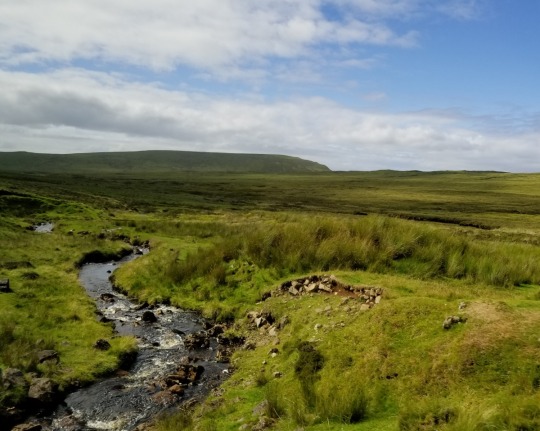
Leaving the Quiraing, we circled around the northern reaches of Skye. The landscape was wide, wild, and full of sheep--some of which made us stop and wait for them to cross the road.
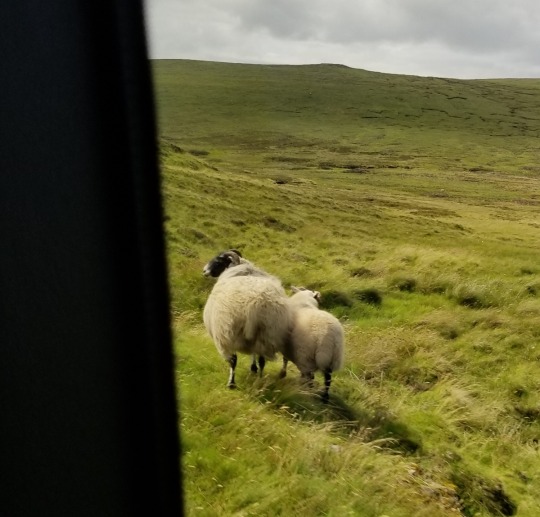
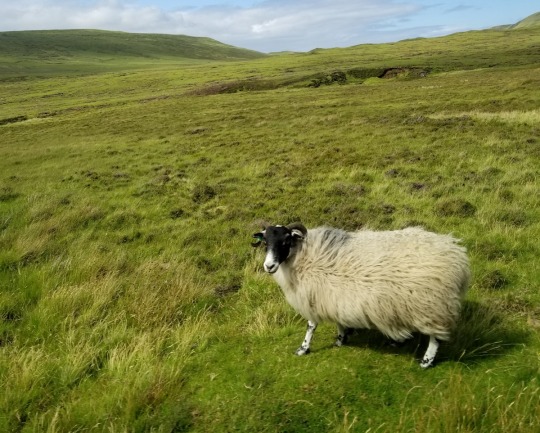

The rest of the trip was a quiet, slightly sleepy ride home, with comfort stops in the northwestern port town of Uig--where you can catch ferries to the remote Outer Hebrides--and the southeastern former ferry town of Kyleakin.

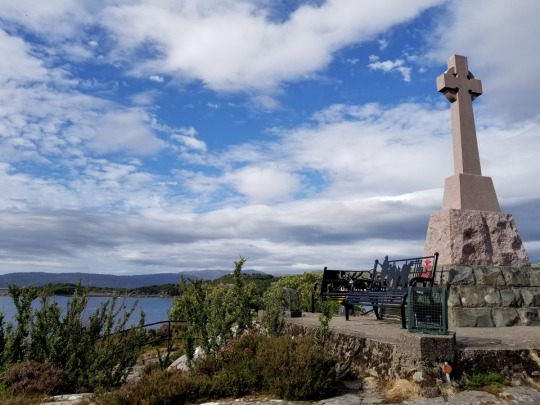

As we approached Inverness, we found the gloomy rain we'd managed to outrun in Skye.
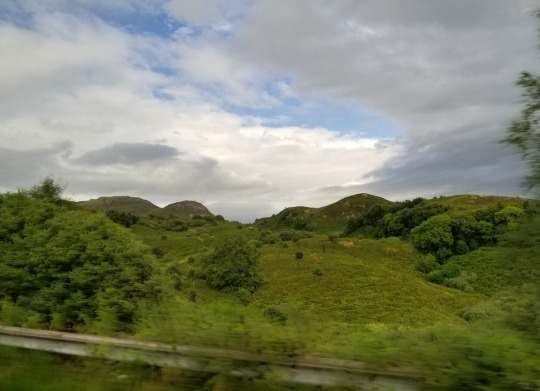
Along the way, Emily told us one last story. It was about how the landscape of the Highlands has changed over the centuries and how Highlanders see their home quite differently than tourists. To us, the Highlands seem romantically desolate–empty windswept hillsides where the forces of nature still hold strong. But that isn't really true.
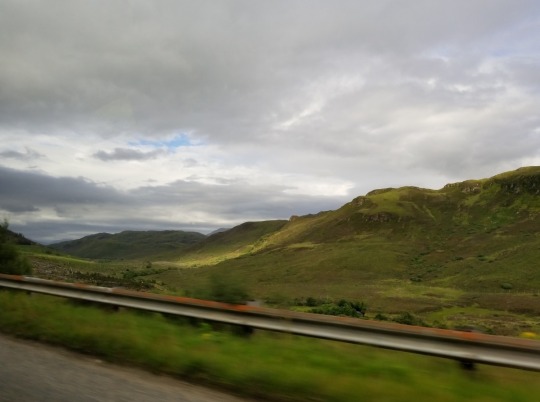
For one, these areas used to be much more populated. Today, Skye has about ten thousand people on it, but it once had five times that number. And instead of being concentrated in a few towns, those people were spread evenly across the entire island. Four hundred years ago, you’d be hard-pressed to find anywhere in Scotland where there wasn’t a farmhouse or two nearby.
The lands were more-or-less free for the people to use as they needed–as long as they made enough to pay their rents. The clan chiefs would collect rents from anyone who lived on their lands, and they would have unquestioned authority to set rules and settle disputes on their land. In exchange, the common folk could focus all their energy on pulling what little sustenance they could from the unyielding land so that they could survive the next winter. Which was hardly a sure thing.
It was a good system for a harsh landscape where raiding and pillaging were the rule rather than the exception.
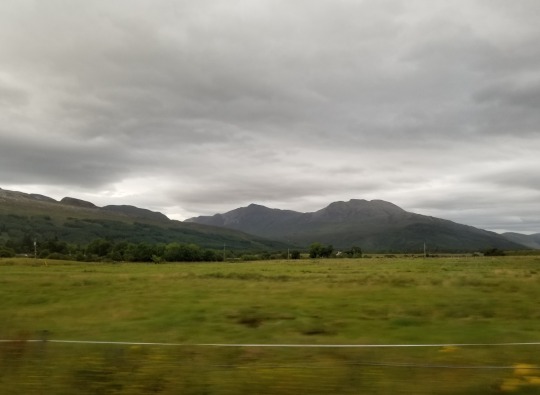
But that all changed after the Battle of Culloden. The clan system was abolished, and the Highlands were finally folded into the British legal and political system.
In exchange for their lordly authority, the clan chiefs were converted into landlords. That meant that instead of just overseeing their territories, they actually owned them. Which meant that they could do whatever they wanted with it. And what they wanted to do was make money.
They drove their former clansmen off their lands to make room for more profitable English sheep farmers. Without land to feed themselves from, the peasants had no choice but to move into towns, doing harder work for less pay in the budding industrial factories--which the clan chiefs also owned. Some left to seek their fortune in North America instead, but a law from Parliament banning emigration put a stop to that.
It was only after an economic downturn--when factories shut down and tens of thousands of Highlanders were on the brink of starving to death–that the former chiefs finally relented and allowed their captive laborers to be shipped off to Canada and Australia, where they could start new lives in a new land.
And now the Highlands consist of one small city, a few small towns and villages, and miles upon miles of empty space between them.

The second difference between Scotland today and the Scotland of yore is the forests. Two thousand years ago, virtually all of Scotland was covered in dense forests. Over the centuries, the forests were cut down for lumber and to make room for farms and cattle. By the start of the modern era, the proportion of forested to non-forested land had been reversed.
When the Highlands were cleared and the peasants corralled into towns, the land might have started reverting to its original wooded state--if not for the vast herds of commercial sheep and wild deer that continuously strip the land of any budding foliage.
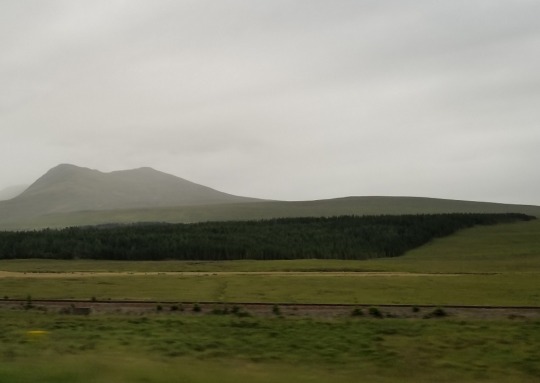
Actually, there are some forests dotting the Highlands. You can spot them pretty easily. They're always near the highways, stand in suspiciously square patches. They're all tree farms filled with non-native species and destined for chopping.
As beautiful and dramatic as the Highlands of today are, they are also a sad reminder to every true Highlander of just how far and how fundamentally they have been cut off from their traditional ways of life.

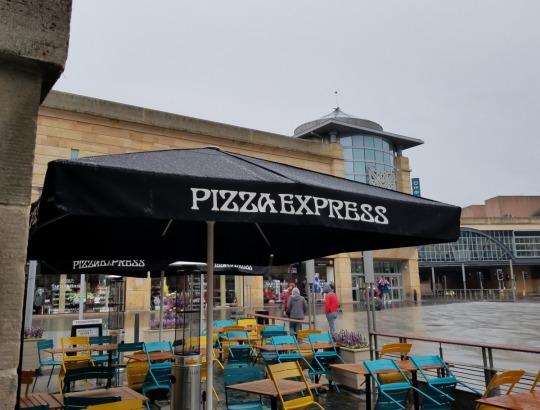
Back in rainy Inverness, I picked up a feel-better pizza for Jessica, and we watched another episode or two of Outlander before going to sleep.
Next Post: Resting Up (Markets, Museums, and More Pizza)
Last Post: Inverness and the Highlands
#180abroad#inverness#highlands#skye#isle of skye#travel#history#landscapes#scenery#you can never go home again
1 note
·
View note